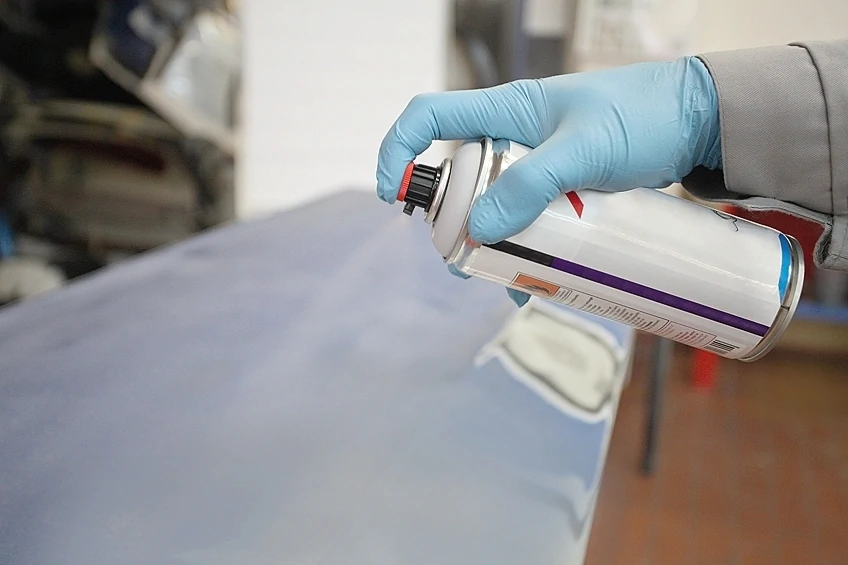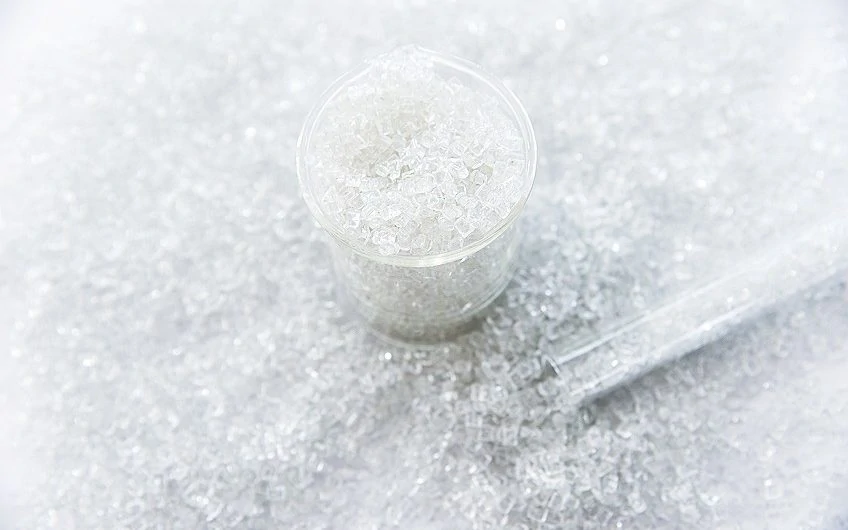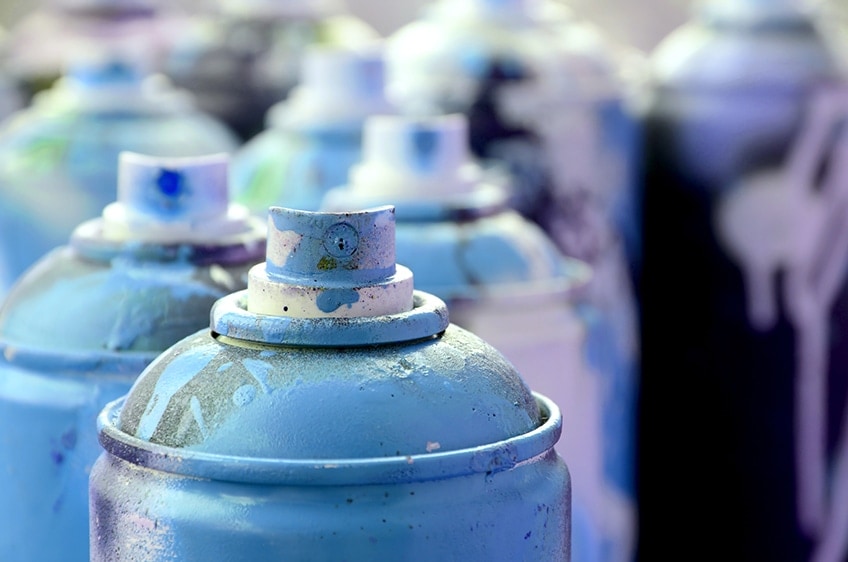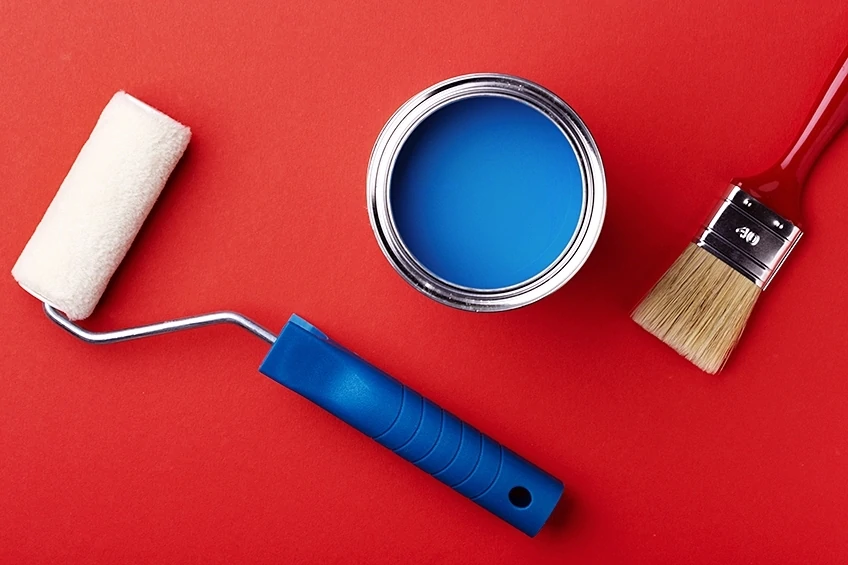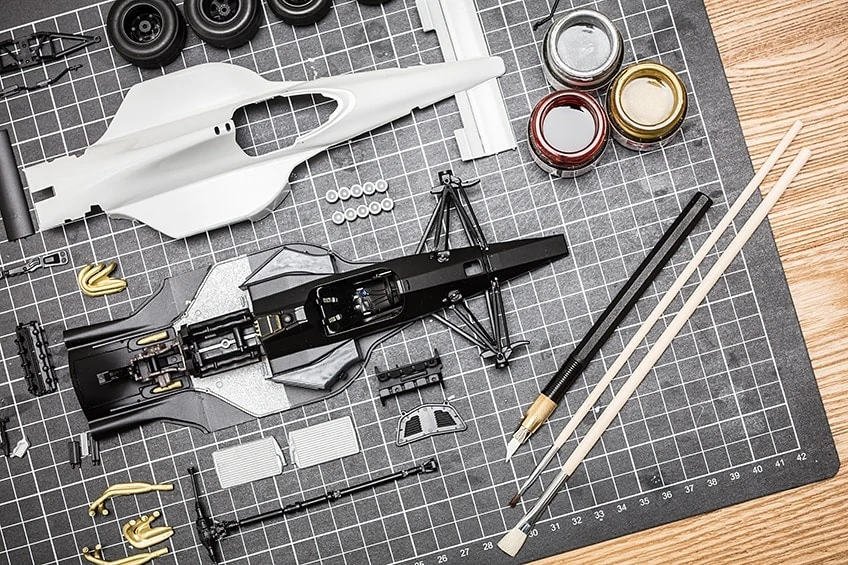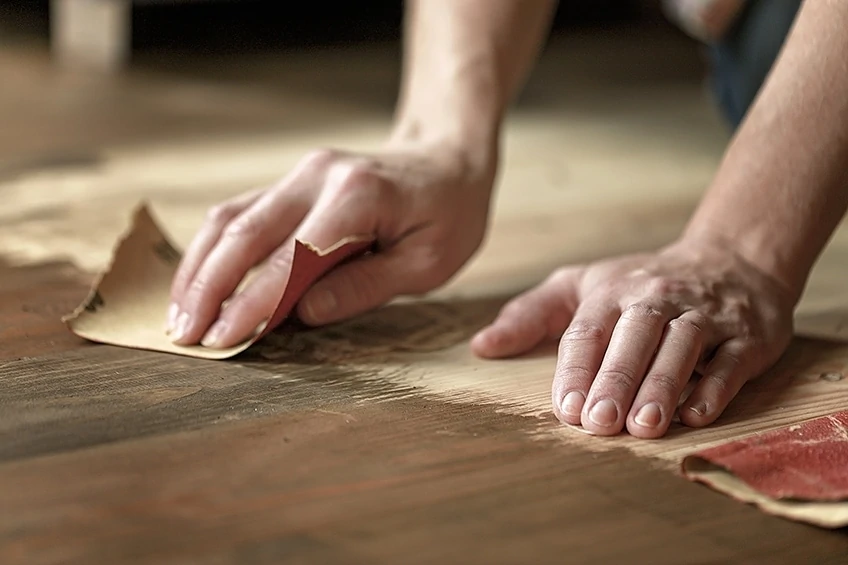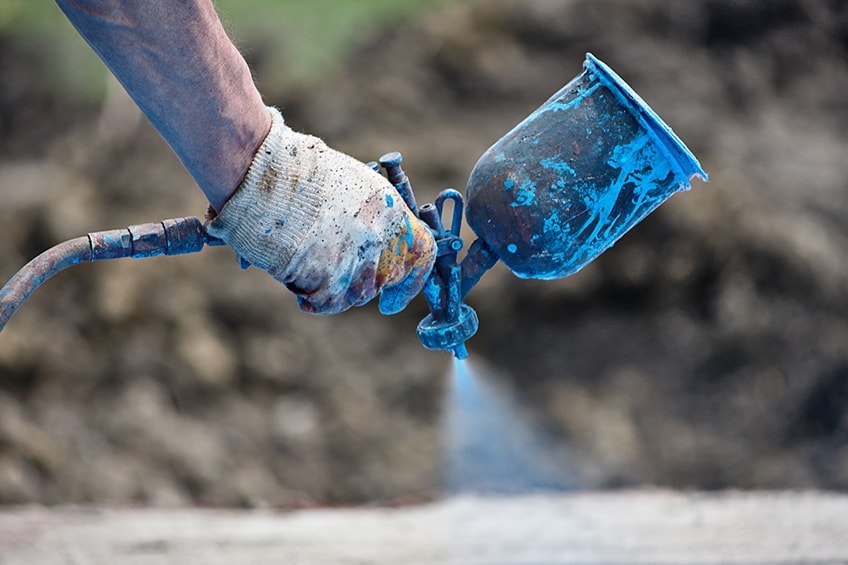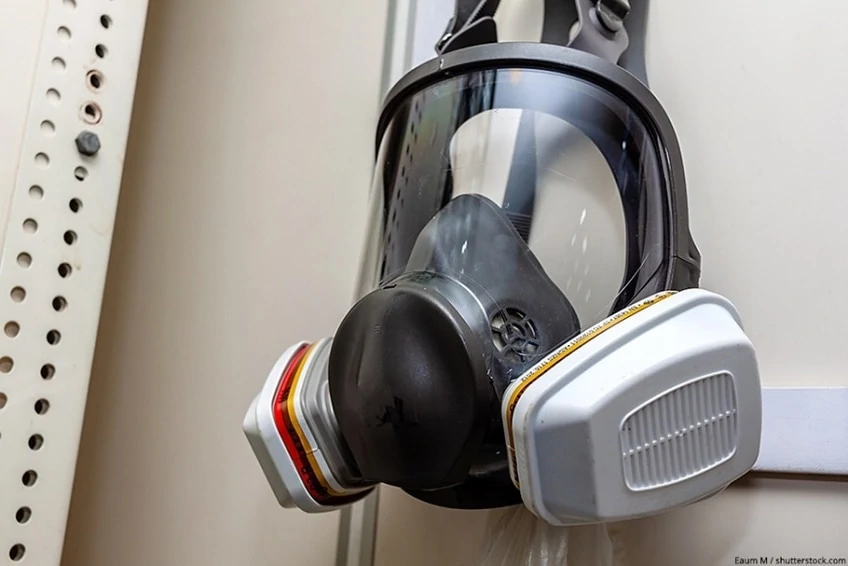How to Paint Plastic – A Comprehensive Guide to Painting Plastic
This post may contain affiliate links. We may earn a small commission from purchases made through them, at no additional cost to you. You help to support resin-expert.com
From kitchen utensils and children’s toys to medical equipment and tools, plastic is ubiquitous and an integral part of our modern lives. However, it has one drawback, namely its poor compostability. Thus, it is not exactly an environmentally friendly material, which is why its disposal should be well considered. Thus, there are good reasons to paint and reuse plastic instead of just throwing it away. You can find out exactly what these are, what paint to use on plastic, as well as how to paint plastic in this comprehensive guide.
Table of Contents
Reasons for Painting Plastic
There are many reasons as to why someone might choose to paint plastic. Among the most important of these reasons is certainly the lack of environmental compatibility of this material: plastic is not biodegradable, meaning that it does not rot. A small plastic bag takes up to twenty years to break down so that it is no longer visible to the naked eye – and that doesn’t mean that it has then completely rotted away. Rather, it has become microplastic, which is ingested by marine animals through food, for example, and of course ends up on our plates again at some point.
Ergo: As practical as this material is, its environmental compatibility is catastrophic. So before you dispose of a high-quality plastic garden chair, for example, just because it’s scratched, you might as well repair it. This can be done with a good varnish or paint for plastic.
However, there are other reasons for painting plastic: A high-quality varnish protects plastic optimally from external influences. Especially in the garden, a good paint for plastic is recommended for outdoor use, since garden furniture and other plastic utensils are often exposed to weather-related stresses. They scratch and fade over the years and, apart from the material damage, at some point no longer present a visually attractive picture.
In addition, you have the choice of many different colors and can therefore paint on plastic objects the way you want.
Paint on Plastic: Can You Paint All Types of Plastic?
The term “plastic” has become common in modern usage for all types of this synthetic material. However, this term is not entirely correct, because the word “plastic” refers to the plasticity of the material, being a plastic that can be deformed. However, this does not apply to all types of plastic.
We are already hinting at it here: There are many different types of plastic. Not all of them are easy to paint. These are materials with a low-energy surface from which both adhesives and paints tend to simply roll off.
For your convenience, we have compiled a table of several types of plastics and their paintability:
| Plastic Type | Paintability |
| Polyvinyl chloride (PVC) | Relatively good to paint, however, problems with paint adhesion can arise due to possibly contained plasticizers |
| Polyethylene (PE) | Very difficult to paint |
| Polypropylene (PP) | Very difficult to paint |
| Other types of plastic, such as polyamide and polycarbonate | The possibility of painting exists with a suitable primer |
In general, hard plastics can be painted if they also have a surface that is not completely smooth. These include, for example:
- Window frames
- Garden furniture
- Planters and vases
- Decorative objects
- Plastic toys and figurines
Materials Needed for Painting Plastic
If you want to paint plastic, you will need:
- A varnish or paint for plastic
- A primer
- A bucket of water
- A plastic cleaner
- A sponge or an absorbent cloth
- Sandpaper
- A paint brush and/or paint roller
- A paint tray
Learning What Paint to Use on Plastic
Three different types of paint are suitable for plastic painting:
- A two-component paint is a highly effective type of paint that optimally covers your plastic surface, although it must first be mixed from two components.
- Water-soluble acrylic paint is based on plastic dispersions and is usually water-thinnable. It is more suitable for interior use.
- Alkyd resin paint, also known as synthetic resin paint, is highly protective and suitable for both interior and exterior use.
Varnishes are available for application with a brush or roller, as well as those for spraying by means of a can or spray gun.
For outdoor use, you should pay attention to good weather resistance and UV resistance. The paint should be resistant to yellowing.
If you want to paint a PVC floor, pay attention to the following: The paint used for this purpose must have a so-called elongation at break of at least 200%, although it is better at 300 to 400%. This indicates how elastic the paint is after the drying time. Since PVC flooring bounces when walked on, the varnish used must also yield without cracking over time.
Therefore, a high elongation at break is essential for PVC lacquer. Other important values are the temperature range as well as toughness-elasticity and, in rooms with high solar radiation, the UV resistance of the PVC lacquer.
Acrylic Paint on Plastic
We now know that plastic is notoriously difficult to paint, so will acrylic paint stick to plastic at all? The short answer is yes, although it is only possible with thorough surface preparation. You will also need to coat the paint with a sealant to increase its longevity, although all acrylic paint will come off of plastic eventually.
Acrylic paints on their own are not usually made for plastic, which means that they do not adhere to the plastic surface easily, and will instead strip right off. To prepare your plastic surface, you will need to apply a base coat of primer or an enamel or oil paint, for which you can get special formulations made for plastic. However, before you can even begin to think of applying a base coat, you must first ensure that your plastic surface is completely clean.
Any imperfections and residues like dust and dirt particles, oils, grease, and fingerprints must be completely removed in order for the base coat to adhere to the surface. You get special plastic cleaners that can even get rid of mold for this purpose.
Once you have thoroughly cleaned the surface, you can apply the primer or base coat. Wait for this to dry, and then go ahead and apply the acrylic paint to the plastic surface. As acrylic is unlikely to last very long on a plastic surface, it is best to apply a few coats to increase its longevity. Once the final coat of paint has dried, apply a sealant over the surface for further protection.
Instructions on How to Paint Plastic
One of the most prequisites for painting plastic is that of proper surface preparation. First of all, any dirt, dust and even the surface grease should be removed. Thoroughly sweep the object to be painted with a hand brush and then carefully wipe it with the sponge or absorbent cloth and a commercial plastic cleaner.
Then, lightly roughen the surface to be painted using the sandpaper. The rough surface optimizes the adhesion of the plastic paint. The object is then thoroughly cleaned again of the sanding dust.
Now apply the primer using the paint roller or paint brush. Once this has been done, wait for the stipulated drying time according to the manufacturer’s data sheet.
When the primer is completely dry, it is sanded and cleaned again. Then the actual paint application takes place.
Things to Note When Painting Plastic
As mentioned, plastic is a low-energy surface, which makes painting difficult. Therefore, the use of a high-quality primer is mandatory. You can omit it in some cases if you use a two-in-one paint for plastic with a primer included, which are often available as spray paint. However, it never hurts to use an adhesion promoter, like this one offered by Kilz. If you really want to make sure that the paint will last a long time on the object, you should definitely make use of it.
Furthermore, it should be noted that plastic parts have a high elasticity. This must also bee considered when selecting a paint for plastic. Otherwise, it can lead to cracking in the paint. The paint used should therefore have a high proportion of so-called elastic additive.
How to Paint Plastic Windows
In addition to the materials for painting plastic listed above, you will also need masking film and masking tape for painting plastic windows. The sandpaper should have a grit size of 240.
The same rules apply to painting plastic windows as to all other plastic surfaces: The correct preparation of the surface is the be-all and end-all. So, the plastic windows must first be cleaned from dust, dirt, and grease. Remember that finger grease can also be deposited on the plastic, so it is best to wear gloves while cleaning. As a rule, water and a commercially available washing-up liquid are sufficient for cleaning. If the dirt is more stubborn, you should use a cleaning agent that contains alcohol. It is recommended that you work with a window open.
Now the first thing to do is mask off all the parts that do not need to be painted with the masking tape, such as windows, hinges, seals, and window handles. You can spread the masking tape generously over the window sills and floor and stick it down. Be sure to tape off the seals really carefully, as they could be damaged by the ingredients in the paint.
Use sandpaper to lightly roughen the surface. However, only run the sandpaper very gently over the substrate so as not to damage the plastic. The substrate can now be cleaned again.
Then apply the primer with the aid of the paint brush. This must now dry. Follow the manufacturer’s data sheet with regard to the drying time.
After the primer has been applied and the drying time has elapsed, the substrate can again be lightly roughened. Dust residues should then be removed again. Now the paint can be applied in the color of your choice. Application must always be in the longitudinal direction, from top to bottom. The following also applies to plastic windows: For smaller areas, it is best to use a paint brush; for larger areas, paint rollers are more suitable.
This is also a multi-layer process. Each coat is followed by a drying phase; once this has elapsed, the coat is lightly roughened and the next coat is applied. As a rule, two coats are applied to plastic windows. This procedure is particularly recommended for a white top coat.
Applying Paint on Plastic PVC Flooring
PVC is the commercial name of polyvenyl chloride. This flooring is roll material, which has many advantages. It is easy to clean and offers a beautiful appearance, which – depending on the purpose of use and the taste of the owner – is very variable.
However, it is precisely the appearance of PVC flooring that suffers a lot over time. The flooring wears down and shows worn spots. Fortunately, you can paint PVC floor and visually restore it. To do this, you will need the following materials:
- A bucket with water
- A plastic cleaner
- A mop
- Special cleaning fleece
- Sandpaper with 400 grit
- Primer and polyurethane (PU varnish) in the same shade
- Additional hardener
- A paint roller
- A paint brush
- A paint tray
It is also possible to work with a spray gun. This is often advisable for large areas, because it makes the work easier and faster. However, some practice is of course required.
Like all surfaces to be painted, the PVC floor must be absolutely free of dirt, dust, and grease. For such large surfaces, it is recommended to use a mop. The PVC surface can now be sanded with the sandpaper. To do this, use the so-called cross sanding method: Straight and rotating movements are superimposed to achieve the best sanding result. Afterwards, you can vacuum the floor and then wipe over it again with the special fleece. Make sure that no dust residues remain, as these could impair the adhesion of the coating.
The primer coat is then applied, evenly but thinly. To do this, use the paint roller so that you can work quickly. A paint brush is recommended for the edges. Sanding grooves should be well leveled.
After about 24 hours, the primer coat should be dry. However, the drying time depends considerably on the ambient temperature and humidity. Follow the manufacturer’s data sheet and, if in doubt, give the primer a little more time.
Now, you can apply the paint. Spray cans or spray guns are suitable for very large and hard surfaces, otherwise you can continue with the paint roller and, on the edges, with a brush. In the latter case, porous surfaces are better leveled, because more paint is applied.
The paint must be applied in at least two coats, although three to four is even better. Between the individual layers of paint, the previously applied varnish must dry for at least eight hours, and the floor must be lightly roughened again. The more layers you apply – up to four layers – the better the result will look.
Using Paint to Cover Plastic Furniture
To repaint a plastic furniture, such as a chair, for instance, you basically need to proceed as you would with any plastic surface. First, the chair is washed with water and the plastic cleaner and dried completely. Then, the surface is roughened with the help of some sandpaper. The grit size is secondary; the only important thing is to completely remove damaged material. This applies in particular to surface parts that have been destroyed or bleached by UV light. The resulting sanding dust must first be removed with a hand brush and then a second time with a damp sponge.
Now the primer is used. Here, too, the paint roller is used for large surfaces and the paint brush for small and delicate surfaces.
Once the primer is completely dry, the garden chair can be lightly roughened once again. You are welcome to use a finer grit for this. Now you can paint the chair in the desired color. Follow the manufacturer’s instructions for both the application of the plastic paint and the drying time.
You would usually apply paint on plastic in several layers, but at least two. Between coats, the chair should be roughened again. Before that, it should be completely dry.
Tips and Tricks for Painting Plastic
Everyone knows it: Even when high-quality brushes are used, they often lose their bristles. The result is highly unsightly visual impairment of the fresh paint. You can prevent this by using special paint brushes and rollers.
Apply the paint evenly and opaquely, but never too thickly, so that no noses or runs develop.
Safety Instructions for Painting Plastic
Before starting work, carefully check the manufacturer’s data sheet and follow its processing and safety instructions. Use disposable gloves, a respirator, and protective goggles and, if possible, work in the fresh air. If this is not possible, ventilate your workplace thoroughly and preferably ensure that there is a draught. Long-sleeved clothing is also advisable.
If the plastic coating comes into contact with your eyes or mucous membranes, wash them out with clean, warm water and see a doctor immediately. Show him the data sheet of the paint manufacturer so that he can initiate the best treatment with regard to the ingredients.
It is best to use an acrylic paint for the interior. This is water-based and therefore less toxic than its resin-based counterpart.
Frequently Asked Questions
How Do I Know What Paint to Use on Plastic?
Either acrylic paint or alkyd resin paint will hold to plastic. For both, however, the plastic surface should be pretreated accordingly by thorough cleaning, sanding, and the use of a suitable primer.
Can You Paint on Plastic PET Bottles?
Acrylic varnish and alkyd resin varnish also hold to PET bottles. Depending on the purpose for which these paints are used, you should resort to water-based paint; this is especially true for crafting with children.
Can I Use Paint to Cover Plastic Kitchen Fronts?
Plastic kitchen fronts can be painted in the same way as a plastic garden chair, for example. An alkyd resin varnish is recommended for this, as it has the best adhesion. Thorough surface pre-treatment is mandatory; roughening must be done very carefully, especially on the glued edges, otherwise the plastic varnish will not cover or will flake off after drying.
Is It Possible to Paint PP Plastic?
PP is very difficult to paint, because neither glue nor varnish will adhere to this material. However, with very good surface preparation and a high quality primer, it might still be possible.
Can You Paint on Plastic Polystyrene?
A high-quality, solvent-free acrylic paint is suitable for polystyrene. Proper surface preparation is also essential here. Under no circumstances should an enamel paint be used, even if these are often labeled as suitable by the manufacturer. Other paints should also not be used, as they could dissolve the material.
What Is the Best Paint for Plastic Styrofoam?
In principle, the same applies to Styrofoam as to polystyrene, since it is basically the same material: Most paints will dissolve the material. This can happen up to complete dissolution. Acrylic varnish or dispersion paint are the best means of choice here. It is important that the paint used is free of solvents.
Painting plastic has its pitfalls. However, if you know a few tricks and focus on optimal surface preparation, you can manage this activity – even if DIY is not your strong suit. We hope that we have been able to help you with our plastic painting guide.


